Verdict
Able to do justice to cutting-edge movie soundtracks and music too, the Arc is yet another great-going-on-brilliant Sonos speaker
Pros
- Expansive, well-defined and invigorating sound
- Good impression of audio height and width
- Fine spec
- Ample control options
Cons
- Slightly bumpy frequency response
- Some treble stridency
- No MQA support
Availability
- UKRRP: £899
- USARRP: $899
- EuropeRRP: €999
- CanadaRRP: CA$1099
- AustraliaRRP: AU$1499
Introduction
The Sonos Arc sees the speaker giant join the ranks of Dolby Atmos toting soundbars that sit beneath your TV
The Sonos model range is looking ever-more formidable. By updating and expanding its portfolio of products – lately the Beam, the Move and the One SL all hit the spot to a lesser or greater extent – Sonos has consolidated its position as the mainstream’s preeminent purveyor of wireless multiroom speakers.
All this activity has left the Playbar – which has soldiered on since 2013 – looking more than a little antiquated. But now the Playbar has been put out of its misery. It’s been replaced by this, the all-new Arc. Meet the new ‘bar, that’s quite a big update on the old ‘bar.
Design
- Reasonably discreet profile
- Upfiring speakers for height channels
- Onboard control buttons
From the circular perforations of its grille to its choice of matte-black or matte-white finishes, the Arc closely follows the design template Sonos laid down a few years ago now. Despite its 114cm length, the brevity of its height (9cm) and depth (11.5cm) mean it’s a reasonably discreet looker – although that length means it needs at least a 55in TV to sit beneath if it’s not going to look a bit odd.
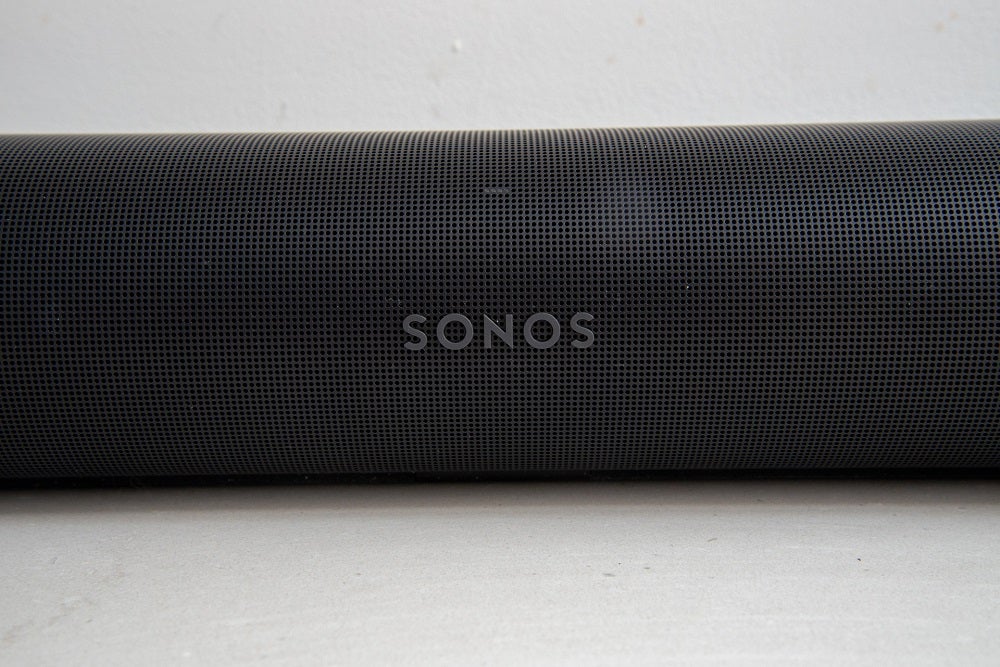
The base of the Arc is gently rubberised to make it shelf- or table-friendly, and there are screw-holes at the back for use with the bespoke wall-bracket. Also at the back is a recess containing the Arc’s few physical inputs: HDMI eARC, figure-of-eight mains power, an Ethernet socket and a set-up button. It’s worth noting that to get uncompressed Atmos you’ll need an eARC compatible TV, though there are workarounds.
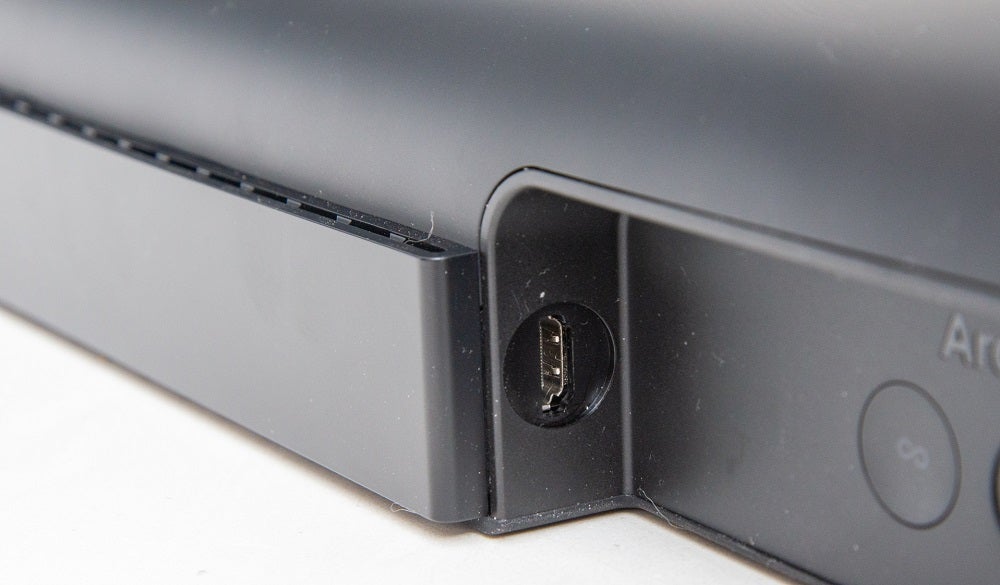
Regardless of whether you position your Sonos Arc on a surface or attach it to the wall, though, you’ll need to make sure it’s not closed in from above. That’s because it has a couple of upward-firing mid/bass drivers, and there are four far-field mics arranged across the top of the ‘bar too – these are for use with either Amazon Alexa or Google Assistant voice control. Also on top of the Arc is where you find a few touch-sensitive controls – these cover ‘play/pause’, volume up/down’ and ‘skip forwards/backwards’.
Features
- Compatible with S2 app
- 11 driver array
- Also works with Sonos Trueplay
Getting digital audio information into the Sonos is hardly a tricky matter. As well as the HDMI and Ethernet sockets on the back, the Arc features 2.4GHz wi-fi and compatibility with Apple AirPlay 2. And there’s an absolute stack of audio possibilities on offer in the Sonos control app.
I’m not the only one who thinks the Sonos control app is the industry standard, and the app to which all other audio companies should aspire. This test of the Arc was conducted using a beta version of S2, so suffice to say that even in beta guise it’s more friendly, more logical and more stable than any nominal rival can claim to be.

Within the app there’s scope to integrate any number of audio streaming services, as well as access to the startlingly worthwhile Sonos Radio service. There’s some EQ adjustment here, the ability to integrate a pair of Sonos One SL speakers as the rear channels in a true surround-sound set-up, or incorporate a Sonos Sub if you’re bass-crazed. As far as simple usability goes, the Sonos app has always led the field – so let’s hope the update on the 8th doesn’t put the kibosh on that.
No matter if the digital audio information is delivered via AirPlay 2, HDMI or the control app, though, once it’s on board the Arc things get just slightly mysterious. Sonos has never been all that keen in dishing out the technical details and, true to form, some of what makes the Arc tick is a closely (and inexplicably) guarded secret.

What’s the resolution of the DAC that’s translating all the digital stuff into analogue information? Well, currently it ‘supports’ up to 16-bit/48kHz, but may rise to 24-bit support by the time S2 is available. It doesn’t support MQA though. How much power do the Arc’s 11 Class D power amplifiers generate? Not saying. What are the drivers made of? Won’t tell. How big are they? It’s classified.
Actually, that last bit’s not completely true. There are three tweeters in the Arc’s 11-driver array, and they’re of the silk-dome type. But how big they are is unknown to the likes of you and me, as is the size and composition of the eight elliptical mid/bass drivers that accompany them.
Two of these eight drivers fire upwards from the top of the cabinet, and are obviously charged with bringing some Atmos-style height to the Arc’s presentation. There’s another one at each end of the chassis, firing outwards to give some width to the sound. The other four, punctuated by the three tweeters, are carefully angled out from the front of the Arc.
If you’ve access to an iOS device, then Sonos’ Trueplay room EQ algorithm can be deployed. This will respond to the dimensions of the room your Arc is in, and its proximity to side walls, in an effort to tailor the way sound reflects off surrounding surfaces to offer a more convincing impression of sonic height and width.
It’s worth mentioning that the Sonos Arc has been updated to support DTS codecs, but only DTS Digital Surround.
Sound quality
- Wide and tall soundstage
- Good with movies and music
- Crossover point between bass and midrange slightly off
Martin Scorsese’s The Irishman has plenty to recommend it – and that includes an extremely effective Dolby Atmos soundtrack. So with the Sonos Arc connected to a TV via HDMI ARC, it’s simply a matter of pressing ‘play’ and settling back for three and a half hours.
In terms of the soundstage the Arc is capable of generating, it’s a far bigger listen – wider and taller – than the soundbar itself. It focuses well, moving effects across the ‘front’ of the stage with real precision, and locating off-screen effects at unlikely distances from the screen. There’s plenty of space on the stage, too – so when a particular sound or effect needs isolating, there’s more than enough room available to do so. Left-to-right movement (or vice-versa, obviously) is secure and believable, and the Arc locates effects with real solidity.
Of course, it’s nigh-on impossible for a single soundbar to offer a true surround-sound experience, even if it’s a) as carefully designed as this one and b) tuned itself to the particular room it’s in. But the Sonos does manful work bringing those ‘rear channel’ effects to a point where you might almost believe they’re located alongside your seated position, which is not something Sonos’ own Beam soundbar is capable of doing, let alone your TV by itself.
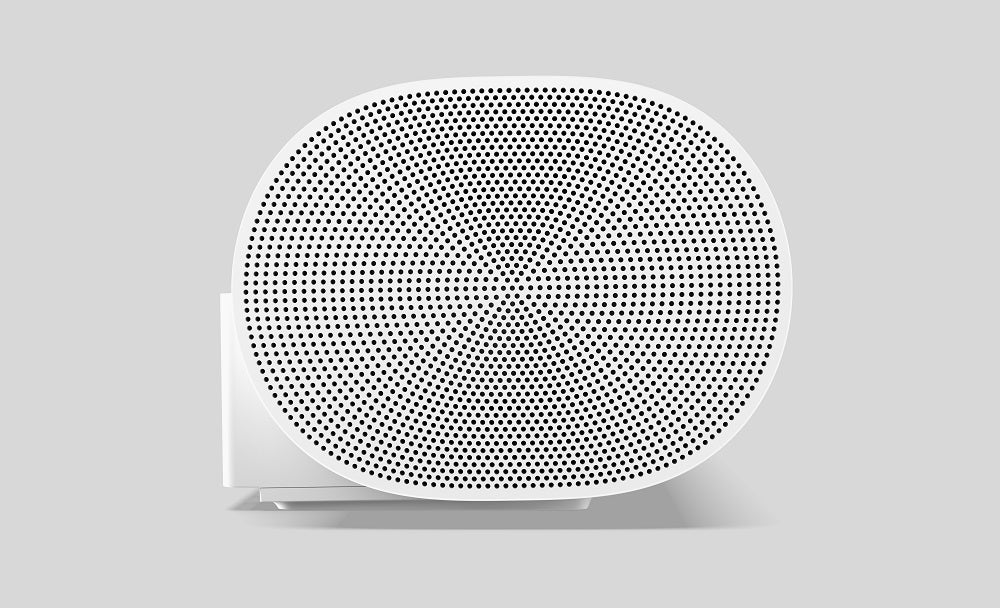
But presenting sound in the vertical plane is what Dolby Atmos is all about, and there’s admirable height to the sound the Sonos Arc serves up. A film like 6 Underground really goes to town with the Atmos effects and the Arc is able to position effects far above the soundbar itself, giving a convincing sensation of height to its soundstage.
Naturally enough, and just as with surround sound effects, the Sonos can’t position effects above you like a ‘traditional’ Atmos system with overhead speakers would. But then, of course, the Sonos doesn’t make you cut holes in your ceiling.
Tonality is, on the whole, pretty well judged. The bass and midrange frequencies, in particular, are impressive with one caveat. The Sonos Arc can dig deeper and hit harder than seems plausible from such a slender soundbar, and its bass response is no blunt instrument. There’s plenty of texture and detail revealed, and a very decent sense of straight-edged control to the start and stop of low-frequency sounds. And the bottom-end stuff doesn’t impact on the midrange above it, which is equally detailed, giving ample character to dialogue and sound-effects alike.
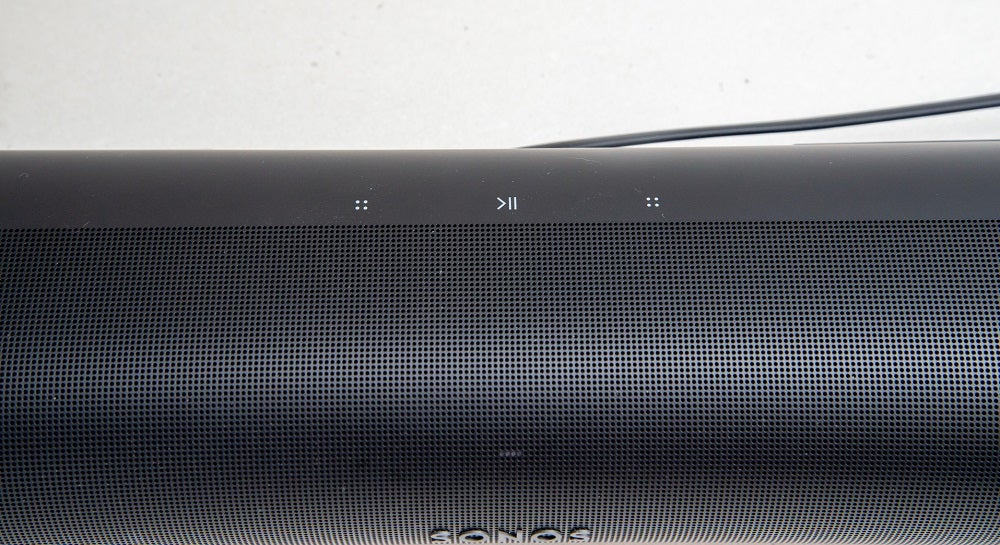
The problem concerns the transition between the two. Although the eight mid/bass drivers appear identical, it seems logical that each driver’s individual crossover point will have been tuned to either offer that ample bass reinforcement or to give the midrange all the character and definition it needs. There is also some digital sound processing going on, so that (for instance) when playing sub-Atmos content, the upward-firing drivers put out more of the (less directional) bass frequencies.
In this respect too, Sonos has been entirely successful – the midrange is just as detailed as the bass response, and it remains distinct and easy to follow even if it’s surrounded by sonic uproar on all sides. But where ‘upper bass’ becomes ‘lower midrange’ there’s an absence (or, more properly, a concavity) where that transition is poorly managed. Bass and midrange sound like two quite separate entities, and the unity of the Arc’s presentation suffers as a result.
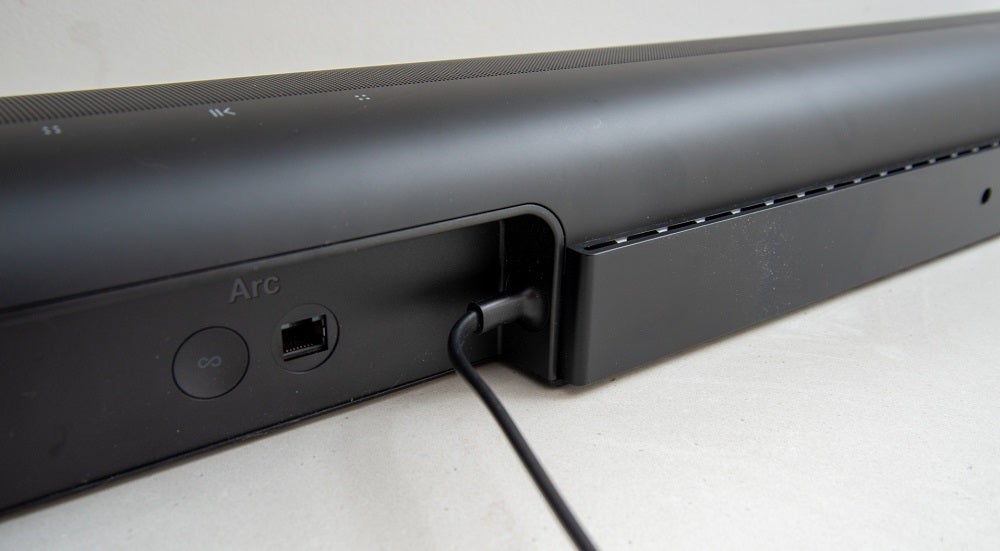
At the top of the frequency range there’s no suggestion of absence. The Sonos Arc is a crisp and forthright listen where treble frequencies are concerned, and while top-end sounds are generally pretty well controlled there are undoubtedly circumstances in which ‘crisp’ might become ‘hard’. Once the Arc has set itself up to your specific environment, it’s certainly worth fiddling with the EQ adjustment in the app to make sure treble sounds don’t set your teeth on edge.
These characteristics carry over to the Arc’s presentation of music. The low-end presence and momentum is all there, the texture and character of the midrange, the forthright and mildly overconfident high-frequency reproduction. But the disconnect between bass and midrange is, if anything, more pronounced (or, rather, more obvious) when listening to music, and the overall sound of the music the Arc produces just lacks a little conviction as a result.
Latest deals
Should you buy it?
You want to improve your home cinema experience Despite its sonic idiosyncrasies, the Sonos Arc has plenty to recommend it. The size of the soundstage it can deliver (when given the right material), for instance, is impressive.
You don’t have a TV that supports eARC To get the full uncompressed Atmos sound, you’ll need a TV that can serve that up to the soundbar. You’ll get Atmos sound even if you don’t, but it won’t be as high quality as it can be.
Final Thoughts
Prospective customers who are already partial to the Sonos system (and who consequently know how simple and straightforward it is to live with) are unlikely to spend much time considering alternatives. The Arc can handle music as well as film soundtracks. In that sense it doubles up as home cinema system and a music system.
Although, you could save a significant sum of money and check out some cheaper Atmos soundbars that also support a subwoofer to boot, though they don’t sound quite as good.
How we test
We test every soundbar we review thoroughly over an extended period of time. We use industry standard tests to compare features properly. We’ll always tell you what we find. We never, ever, accept money to review a product.
Find out more about how we test in our ethics policy.
FAQs
The Arc has been updated to support DTS soundtrack, though its compatibility is limited to DTS Digital Surround tracks.
Jargon buster
Dolby Atmos
Dolby Atmos is an object-based audio format. It expands on 5.1 and 7.1 soundtracks by adding overhead channels. Sounds are referred to as “audio objects”, of which there can be up to 128 audio channels, and these ‘objects’ can be accurately positioned within a 3D soundscape. This allows soundtracks that support the technology to place sounds above and around the listener with compatible kit.
























